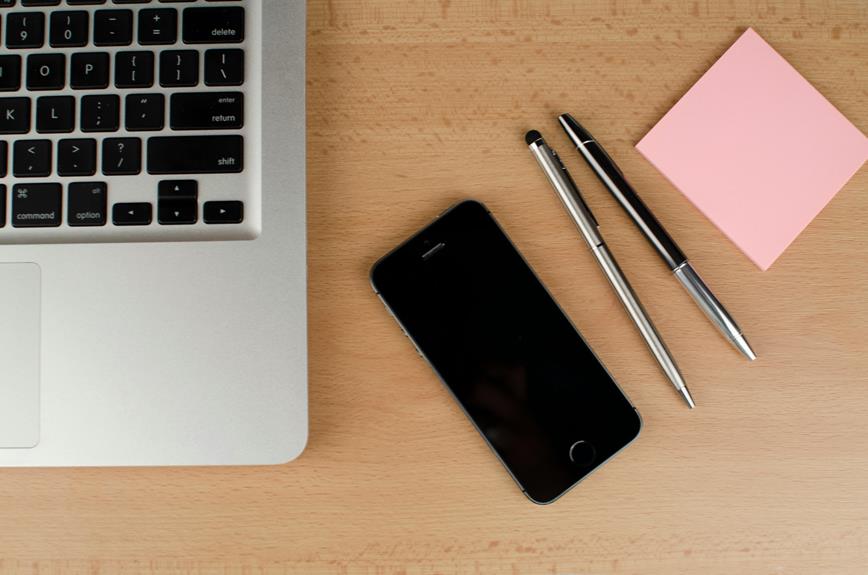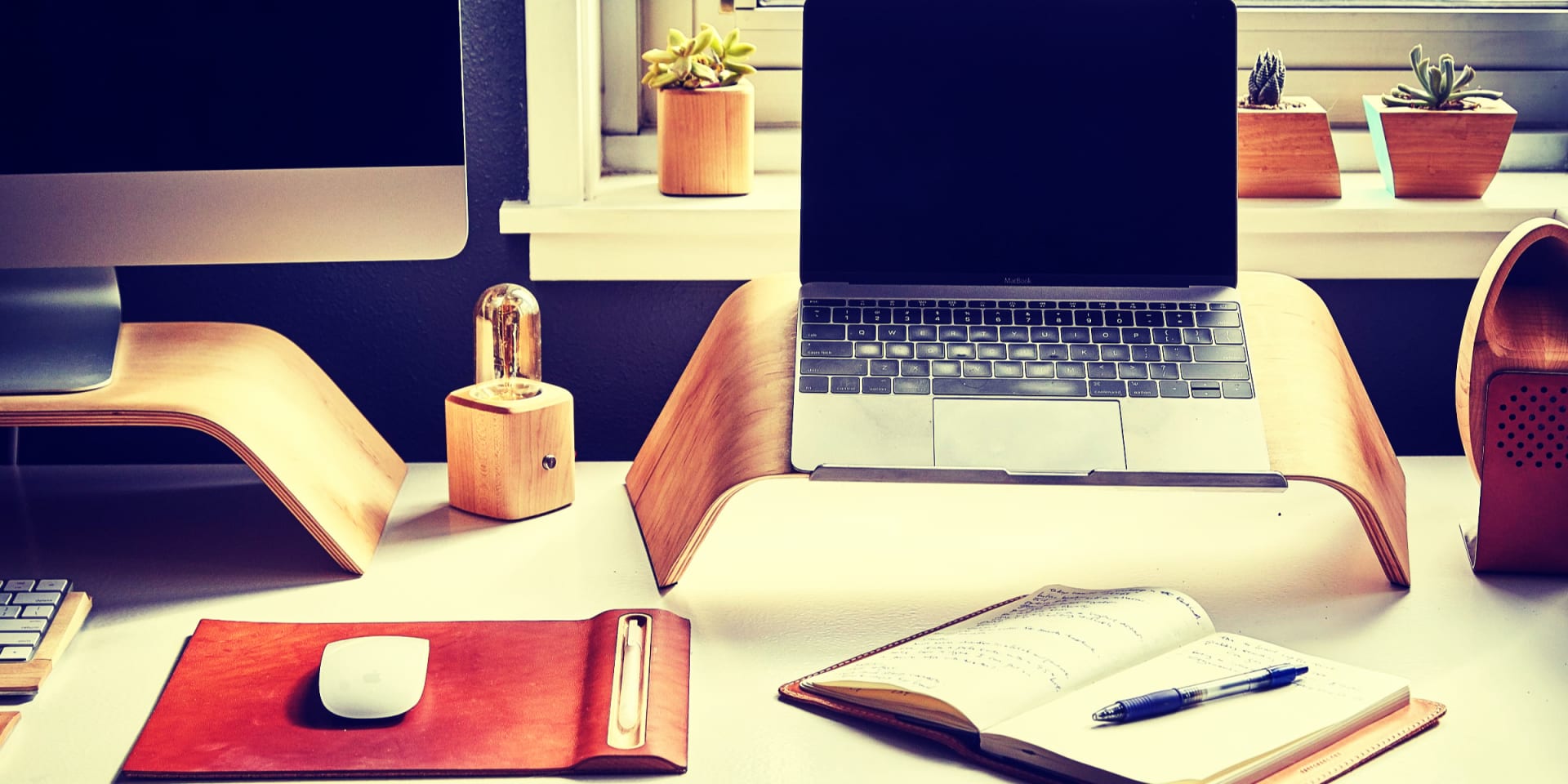So, you think you've got your home office all figured out, huh? Well, have you ever considered the true necessity of cooling pads for your laptop? Sure, you might think it's just an optional accessory, but let's take a closer look.
In this fast-paced world of technology, maintaining peak performance is key, and overheating can really put a damper on things. That's where cooling pads come into play, keeping your laptop running smoothly and extending its lifespan.
Let's delve into the essentiality of these little gadgets and how they can make a world of difference in your home office setup.
Key Takeaways
- Monitoring and managing laptop temperature is crucial for safe operation and efficient functioning.
- Excessive heat can decrease performance, damage the device, and lead to unexpected shutdowns.
- Cooling pads can regulate laptop temperature, improve cooling efficiency, and enhance the longevity of laptop components.
- Proper laptop maintenance, including regular cleaning, software updates, and avoiding spills and physical damage, contributes to the overall health and performance of the laptop.
Importance of Laptop Cooling
You need to understand the importance of laptop cooling to prevent overheating and maintain optimal performance. Monitoring your laptop's temperature is crucial to ensure that it operates within safe limits. Excessive heat can lead to decreased performance and even permanent damage to your device. To address this, it's essential to explore effective cooling solutions that can regulate the temperature of your laptop.
Laptop temperature management is vital for ensuring that your device functions efficiently. When your laptop runs too hot, it can lead to throttling, where the processor slows down to reduce heat generation. This directly impacts your productivity and the overall user experience. By implementing cooling solutions such as using a cooling pad or adjusting your laptop's power settings, you can effectively manage its temperature and maintain consistent performance.
Understanding the significance of laptop cooling and implementing appropriate cooling solutions is essential for anyone seeking to optimize their device's performance. By taking proactive steps to regulate your laptop's temperature, you can safeguard its longevity and ensure that it operates at its best.
Impact of Overheating on Performance
Excessive heat can significantly impair a laptop's performance and longevity. Proper temperature management is crucial for maintaining productivity and ensuring the longevity of your equipment.
When a laptop overheats, the heat can cause the internal components to work inefficiently, leading to a decrease in performance. This can manifest as slow processing speeds, lagging applications, and even unexpected shutdowns. Heat dissipation is essential to prevent these issues and maintain optimal productivity levels.
Moreover, prolonged exposure to high temperatures can also impact the longevity of your laptop. The excessive heat can lead to wear and tear on the internal components, potentially shortening the lifespan of your device. This can result in the need for more frequent repairs or even premature replacement of your laptop, ultimately affecting your work and increasing expenses.
Benefits of Using Cooling Pads
Proper utilization of cooling pads can significantly enhance the efficiency and longevity of your laptop in a home office setting. When using a cooling pad, you can experience the following benefits:
- Improved Cooling Efficiency: Cooling pads are designed to dissipate heat efficiently, preventing your laptop from overheating and maintaining optimal performance.
- Enhanced Laptop Longevity: By reducing the risk of overheating, cooling pads help prolong the lifespan of your laptop components, such as the battery and internal hardware.
- Ergonomic Features: Many cooling pads come with adjustable height settings and ergonomic designs, promoting better posture and comfort during extended work hours.
- Portability: Some cooling pads are lightweight and portable, allowing you to easily transport them between your home office and other workspaces.
Considerations for Home Office Setup
Consider airflow when arranging your home office setup. When it comes to creating an optimal workspace, airflow is key. Start by positioning your desk in a way that allows for good air circulation. Placing it near a window or using a fan can help maintain a comfortable temperature.
Additionally, investing in an ergonomic chair can significantly impact your productivity and well-being. Look for a chair that provides proper lumbar support and allows for adjustments to ensure a comfortable and healthy sitting position.
Furthermore, natural lighting plays a crucial role in a home office. Position your desk near a window to take advantage of natural light, which not only reduces eye strain but also promotes a more positive and energized work environment. Consider using window treatments that allow you to control the amount of light entering the space.
Comparison of Cooling Pad Options
When choosing a cooling pad for your home office, it's important to consider the types available, their performance, and usability.
Different cooling pads offer varying features and benefits, so it's crucial to weigh your options based on your specific needs.
Understanding the differences in cooling pad options can help you make an informed decision that enhances your home office setup.
Types of Cooling Pads
You can compare different types of cooling pads to find the most suitable option for your home office. Consider the following options:
- Gel Cooling Pads: These pads contain a cooling gel that absorbs heat from your laptop, providing passive cooling without any noise.
- Fan Cooling Pads: Equipped with built-in fans, these pads actively circulate air to dissipate heat from your laptop, offering more effective cooling but may produce some noise.
- Passive Cooling Pads: These are usually made of materials with high heat conductivity, such as aluminum, and provide a silent, fanless cooling solution.
- Active Cooling Pads: These pads come with fans or other mechanisms for active heat dissipation, ensuring efficient cooling even during heavy usage.
Performance and Usability
To assess the performance and usability of different cooling pad options, start by evaluating how each type addresses the specific cooling needs of your home office setup. Consider factors such as the size of your laptop, the intensity of your work, and the airflow requirements. A cooling pad that focuses on performance optimization can effectively dissipate heat, ensuring your laptop operates at an optimal temperature. Additionally, it's essential to prioritize workstation ergonomics, as a well-designed cooling pad can elevate your laptop to a comfortable viewing angle. Below is a comparison table of different cooling pad options to help you make an informed decision:
| Cooling Pad Option | Performance Optimization | Workstation Ergonomics |
|---|---|---|
| Option 1 | High | Yes |
| Option 2 | Medium | No |
| Option 3 | Low | Yes |
Tips for Maximizing Cooling Effectiveness
Using the right placement for your cooling pad can significantly enhance its effectiveness in keeping your home office comfortable. To maximize the cooling effectiveness of your pad, consider the following tips:
- Positioning: Place the cooling pad directly under the hottest areas of your laptop to ensure that it effectively dissipates heat. This strategic placement allows for maximum airflow and efficient heat dissipation.
- Elevate Your Laptop: Use a laptop stand to elevate your device and create space for air circulation beneath it. This simple adjustment can significantly enhance the cooling pad's ability to maintain a comfortable temperature.
- Room Ventilation: Ensure that your home office has adequate ventilation. Good airflow in the room helps the cooling pad in its mission to effectively dissipate the heat generated by your laptop.
- Regular Maintenance: Keep the cooling pad clean and free from dust and debris. Regular maintenance ensures that it functions optimally and continues to provide effective cooling for your home office setup.
Best Practices for Maintaining Laptop Health
Maintain your laptop's health by implementing best practices for regular care and maintenance. Proper laptop ventilation is crucial for preventing overheating and ensuring optimal performance. To achieve this, regularly clean the laptop's vents and fan using compressed air to remove dust and debris. Additionally, ensure that the laptop is placed on a flat, hard surface to allow for adequate airflow. Efficient cooling solutions, such as cooling pads or stands, can also help maintain the laptop's temperature within a safe range.
In addition to focusing on the physical aspects of laptop maintenance, it's essential to keep the software optimized. Regularly update the operating system and drivers to ensure that the laptop's components are functioning properly. Utilize antivirus software to protect against malware and viruses that can slow down the system and cause damage.
Furthermore, avoid eating or drinking near the laptop to prevent spills and crumbs from entering the keyboard and other openings. Proper handling and storage of the laptop, such as using a protective case during transport, can also contribute to its overall health and longevity.
Frequently Asked Questions
Can Using a Cooling Pad Extend the Lifespan of My Laptop?
Using a cooling pad can extend your laptop's lifespan by improving energy efficiency and maintaining optimal performance. It also helps prevent dust buildup, reducing the risk of overheating and potential damage to your device.
Are There Any Specific Types of Cooling Pads That Work Best for Home Office Setups?
When comparing types of cooling pads, consider their effectiveness and ergonomic design for your home office. Look for features like adjustable height and fan speed to ensure optimal comfort and performance for your setup.
How Often Should I Clean My Cooling Pad to Ensure Maximum Effectiveness?
To maintain maximum effectiveness, clean your cooling pad every 1-2 months. Use a DIY method like wiping with a damp cloth or using compressed air to remove dust. Regular cleaning ensures optimal airflow and cooling performance.
Can Using a Cooling Pad Help Reduce the Noise Level of My Laptop's Fan?
Using a cooling pad can help reduce the noise level of your laptop's fan by lowering the laptop temperature and increasing efficiency. It provides extra cooling, reducing the strain on your laptop's built-in cooling system.
Are There Any Potential Drawbacks to Using a Cooling Pad for My Home Office?
Using a cooling pad in your home office may have potential drawbacks, such as long term effects on your laptop's battery. However, it can help prevent overheating and improve overall performance. Consider the trade-offs.





